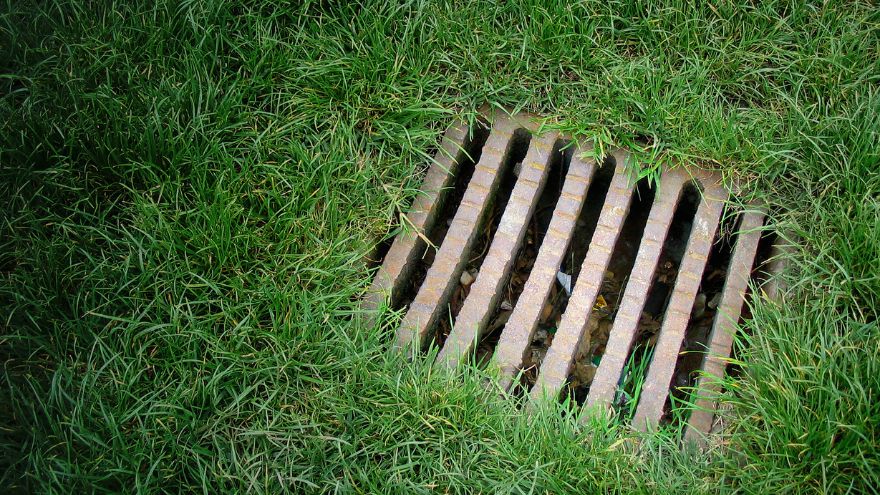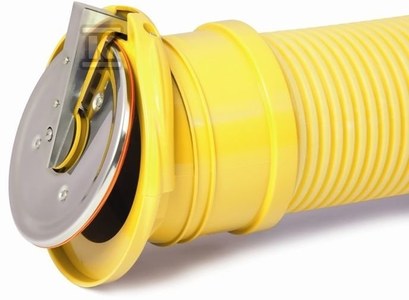Excess water, both from rainfall and from increased groundwater levels, contributes to the formation of muddy areas, flooding and damage to infrastructure. Drainage wells are an effective solution that allows collecting, draining and storing excess water on the plot and minimizing the risk of flooding the area.

How to get rid of excess water on the plot?
Effective drainage of water from the site, especially in areas with high groundwater levels or frequent rainfall, is crucial to maintaining stability, preventing flooding and minimizing damage related to excessive moisture. One of the most popular drainage methods is the use of drainage wells. These are special structures that enable the collection and drainage of excess water on the plot. Thanks to them, it is possible to effectively control the water level, thus protecting the facility against damage.
What is a drainage well?
 A drainage well is usually a container made of durable plastic that is buried in the ground. The design of the well allows water to be collected inside while allowing free flow through the side holes. This water can then be drained through drainage pipes or infiltrated into the ground. The choice of the appropriate method depends on individual needs and field conditions. Drainage wells are available in various sizes and configurations and with various capacities, including single-chamber or multi-chamber models, which enable even better management of excess water. Manholes made of high-quality plastics are resistant to corrosion, weather conditions and chemical agents, which guarantees their long-term and reliable operation.
A drainage well is usually a container made of durable plastic that is buried in the ground. The design of the well allows water to be collected inside while allowing free flow through the side holes. This water can then be drained through drainage pipes or infiltrated into the ground. The choice of the appropriate method depends on individual needs and field conditions. Drainage wells are available in various sizes and configurations and with various capacities, including single-chamber or multi-chamber models, which enable even better management of excess water. Manholes made of high-quality plastics are resistant to corrosion, weather conditions and chemical agents, which guarantees their long-term and reliable operation.
Why are drainage wells used?
Drainage wells are extremely versatile structures that offer numerous benefits to plot users, including:
- Rainwater drainage: One of their main applications is the effective drainage of rainwater that may accumulate on the plot surface. When it rains, the wells allow water to drain quickly, which minimizes the risk of muddy areas and ensures a dry and stable surface. This allows you to avoid difficulties in moving around the plot and potential damage such as landslides or erosion.
- Protection against flooding: Drainage chambers play an important role in protecting buildings and infrastructure from flooding. By effectively collecting water, wells prevent flooding, which may lead to damage to foundations, walls or electrical installations or the formation of mold.
- Water retention: Some models have retention functions, allowing you to store water that can be used to irrigate your garden or as a source of drinking water for farm animals. Thanks to this, water resources are used in an efficient and ecological way, contributing to the sustainable management of natural resources.
Drainage wells at the Onninen wholesaler
The Onninen wholesaler is a renowned supplier of products related to water and sewage networks, offering a wide selection of drainage wells and necessary accessories. The available products are distinguished by high quality and effectiveness.
- Karmat drainage well , overflow and seepage - this complete yellow drainage well, made of polypropylene, allows for the effective removal of excess water. It is intended for use in drainage and seepage systems. Its diameter is 110 mm. It is ready for assembly.
-
 The Karmat storm gate valve is made of polypropylene and has a diameter of DN 72-100 mm. It is intended for use in drainage systems. It has type 0 and is the final element connected using a universal connection. Provides effective control of rainwater flow.
The Karmat storm gate valve is made of polypropylene and has a diameter of DN 72-100 mm. It is intended for use in drainage systems. It has type 0 and is the final element connected using a universal connection. Provides effective control of rainwater flow.
The models available at the Onninen wholesaler meet the highest standards and are an excellent choice for people looking for effective solutions for draining excess water on the plot. Their use contributes to improving the quality of the substrate and increasing the comfort of use, however, the choice of a specific product depends on individual needs and the characteristics of the terrain.